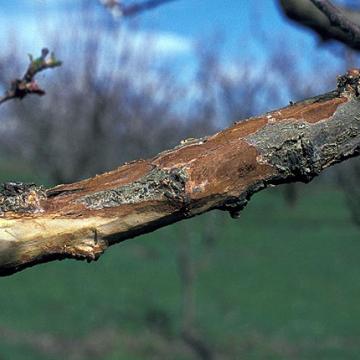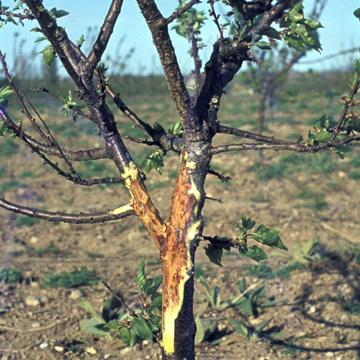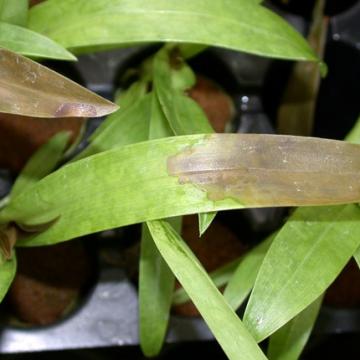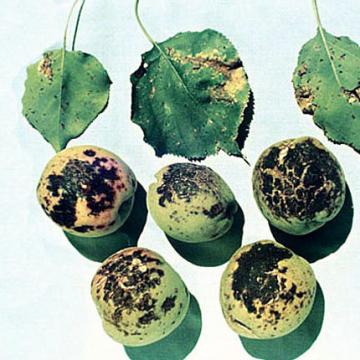DISEASE: Bacterial canker and blast
HOST: Apricot
Young infected twig with droplets of bacterial ooze on stem.
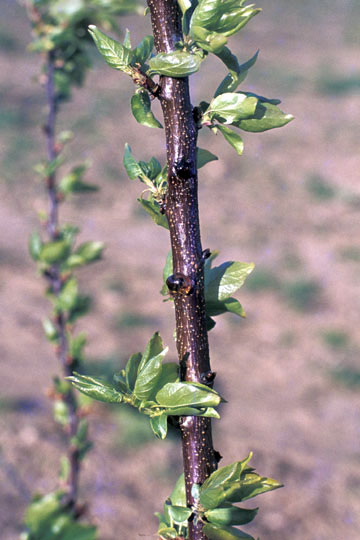
Bacterial canker and blast | Apricot
DISEASE: Bacterial canker and blast
HOST: Apricot (Prunus armeniaca 'Moorpark')
PATHOGEN: Pseudomonas syringae pv. syringae
SOURCE: J. Young
DISEASE: Bacterial canker and blast
HOST: Apricot
Bacterial canker has many symptoms. Typical symptoms are brown, sometimes reddish brown, internal tissues and rough, cracked bark.
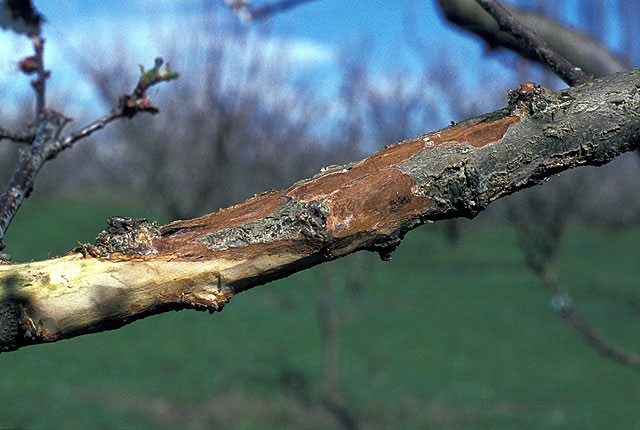
Bacterial canker and blast | Apricot
DISEASE: Bacterial canker and blast
HOST: Apricot (Prunus armeniaca 'Moorpark')
PATHOGEN: Pseudomonas syringae pv. syringae
SOURCE: J. Young
DISEASE: Bacterial canker and blast
HOST: Apricot
Infected apricot with sparse foliage (some twigs with no foliage) and a discolored area exposed where bark was removed.
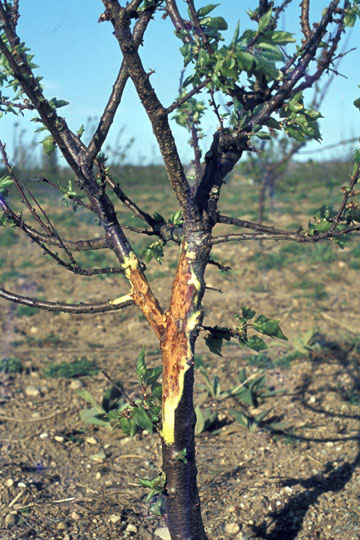
Bacterial canker and blast | Apricot
DISEASE: Bacterial canker and blast
HOST: Apricot (Prunus armeniaca 'Moorpark')
PATHOGEN: Pseudomonas syringae pv. syringae
SOURCE: J. Young
DISEASE: Bacterial canker and blast
HOST: Apricot
Fruit spot phase with numerous reddish necrotic spots.

Bacterial canker and blast | Apricot
DISEASE: Bacterial canker and blast
HOST: Apricot (Prunus armeniaca 'Moorpark')
PATHOGEN: Pseudomonas syringae pv. syringae
SOURCE: J. Young
DISEASE: Bacterial leaf blight and rot
HOST: Orchid
Orchid hybrid (Odontoglossum × Memoria Martin Orenstein 'Lulu') with large, brown, infected area on leaves with water-soaking at margin between healthy and diseased tissues.

Bacterial leaf blight and rot | Orchid
DISEASE: Bacterial leaf blight and rot
HOST: Orchid (Odontoglossum sp.)
PATHOGEN: Burkholderia gladioli pv. gladioli
PATHOGEN SYNONYM: Pseudomonas gladioli pv. gladioli
SOURCE: L. Keith
DISEASE: Bacterial spot
HOST: Apricot
Fruit with black scabs and cracks, and leaves with brown lesions, some coalescing to form large necrotic areas.
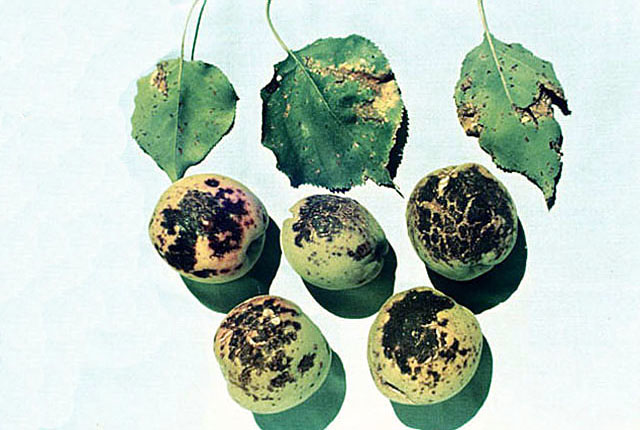
Bacterial spot | Apricot
DISEASE: Bacterial spot
HOST: Apricot (Prunus armeniaca 'Moorpark')
PATHOGEN: Xanthomonas arboricola pv. pruni
PATHOGEN SYNONYM: Xanthomonas campestris pv. pruni
SOURCE: J. Young



